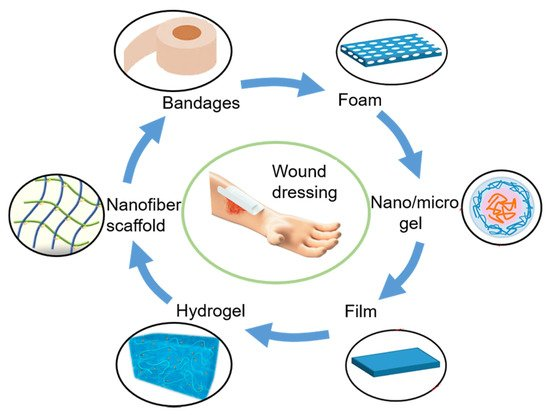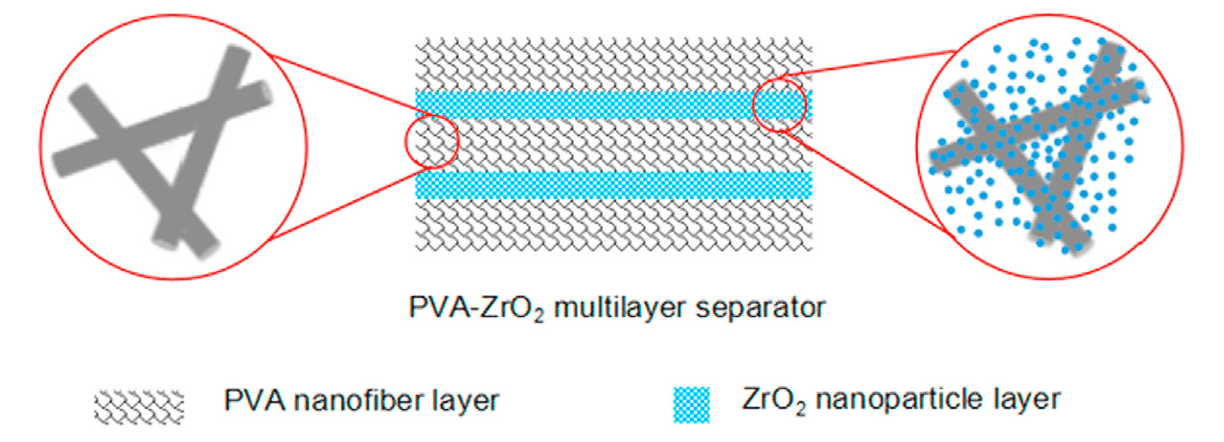Copyright © 2022 Foshan MBRT Nanofiberlabs Technology Co., Ltd All rights reserved.Site Map
Catalogue
1. Properties of PVA materials
2. Application of electrospun PVA
3. Electrostatic spinning PVA parameter template
4. Common spinning problems and Solutions
1. Properties of PVA materials
Polyvinyl alcohol (PVA) is a water-soluble polymer with the chemical formula of [C2H4O] n. The appearance is a white flake, flocculent or powdery solid, tasteless. It is characterized by good compactness, high crystallinity, strong adhesive force, flexible and smooth film, oil resistance, solvent resistance, wear resistance, good gas permeability, and water resistance after special treatment. It is widely used.
It is non-toxic, tasteless and harmless to the human body. It has good affinity with the natural environment, no accumulation and no pollution. Polyvinyl alcohol film is a kind of green environmental protection functional material with polyvinyl alcohol as the main body, adding modifiers and other additives, which can be completely degraded by microorganisms in the soil after special processing. It can be degraded into carbon dioxide and water in a short time, and has the effect of improving the land. The biggest advantage of polyvinyl alcohol film is water solubility, and the biggest disadvantage is poor water resistance.
The poor water resistance is due to the hydrophilic hydroxyl (- OH) in its molecule. The water resistance of PVA film can be improved if hydroxyl groups are properly blocked and water resistant groups are connected. PVA contains hydroxyl groups, which can produce all typical reactions of polyols. When appropriate polycondensate is selected, the hydroxyl groups in PVA can be appropriately mixed with each other in a small amount, so that PVA forms a strong and tough three-dimensional structure, stabilizes the air tightness of PVA under wet conditions, and improves the water resistance. In practical application, the water solubility and moisture absorption of polyvinyl alcohol film can be controlled by adjusting raw materials, formulations and processes to meet the needs of different purposes.
2. Application of electrospun PVA
(1) Biomedicine: because of its huge surface area and volume ratio, high porosity, sufficient permeability, excellent wound exudate absorption capacity, structural similarity with skin ECM, excellent antibacterial property, long-term slow-release characteristics and good biocompatibility. It can be used as wound dressing, cell scaffold, in vitro tissue reconstruction, etc. A research team summarized the electrospun PVA nanofibers used for wound healing and pointed out that they have great development prospects in the field of biomedicine.

Figure 1: electrospun medical nanofibers for wound healing
DOI:doi.org/10.3390/membranes11100770
(2) Sound absorbing materials: traditional sound absorbing materials mainly include sound-absorbing cotton, space sound-absorbing body, perforated plate, sound-absorbing foam, etc. compared with traditional sound-absorbing materials, electrospun PVA nanofiber materials have the characteristics of small nanofiber diameter, large specific surface area, small void and light weight, which are conducive to improving sound-absorbing performance. Some research teams have applied PVA materials to sound-absorbing materials, improving the air viscosity, heat conduction, fiber vibration Friction and other effects are converted into mechanical energy or thermal energy loss, which has great prospects in the field of sound absorption and noise reduction.

Figure 2: Research Progress of sound absorption properties of electrospun fiber composites
DOI:doi.org/10.3390/nano12071123
(3) Heavy metal ion and dye adsorption materials: heavy metal ion pollution and organic dye compound pollution have caused serious harm to the ecological environment and the health of residents. Because PVA macromolecules have a large number of side groups - CN, and - CN has the characteristics of strong polarity and high activity, PVA can have physical or chemical interaction with many small molecule compounds, so as to realize the modification of PVA fibers and give new required properties to the fibers. Among them, the surface of PVA nanofibers is aminated or amidoximized to introduce amino or amidoxime groups with adsorption activity, which can coordinate with metal ions. It has the advantages of small fiber diameter and large specific surface area. Some research teams use electrospun PVA materials for heavy metal adsorption, and the development of heavy metal ion adsorption and dye adsorption is of great significance.

Figure 3: new electrospun β- Simultaneous and rapid removal of organic micro pollutants and heavy metal ions from water by CD / CS / PVA nanofiber membrane
DOI:doi.org/10.1016/j.cej.2019.122232
(4) Battery separator: as one of the important components of lithium-ion battery, its performance directly affects the performance of the battery. The porosity, liquid absorption and even thermal decomposition temperature of PVA composite membrane are better than that of traditional membrane. And the shrinkage and expansion rate of PVA composite membrane remained at a low level. The research team applied electrospun PVA material to the battery separator, which promoted the development of lithium-ion batteries.

Figure 4: pva-zro2 multilayer composite separator for improving electrolyte performance and mechanical strength of lithium ion battery
DOI:doi.org/10.1016/j.ceramint.2020.08.095
3. Electrostatic spinning PVA parameter template
(1) Spinning material: polyvinyl alcohol PVA, alcoholysis degree 87-89%, polymerization degree 2000 ± 50, 10wt%, distilled water.
(2) Experimental instruments: 50ml conical flask, magnetic stirrer, water bath, electronic balance, E05 electrospinning machine.
(3) Spinning solution configuration: when preparing PVA solution, slowly pour the PVA powder into the distilled water that is being stirred and the water temperature is lower than room temperature (25 ℃). After stirring for 10-15 minutes to fully disperse the particles, raise the temperature to 95 ℃ (hot melt PVA) while stirring. The feeding shall be as slow as possible, and the stirring speed shall be 100-200 R / min (too weak: the particles settle into lumps; too strong: it is easy to bubble).
(4) Stable mixed spinning experimental parameters: voltage + 10kV, liquid supply speed 0.8ml/h; Roller: voltage - 20kV, ambient humidity 50% RH, ambient temperature 34 ℃; Spinning distance: 150-200mm.
4. Common spinning problems and Solutions
The film formation is very thin or the jet density is low. Note that the material needs a relatively high relative humidity, and the spinning efficiency will be reduced under low humidity; Coagulation will occur during long-term storage. It can be dissolved by reheating and stirring; Pay attention to adding powder gradually in the liquid preparation, and stir at high speed to avoid agglomeration.